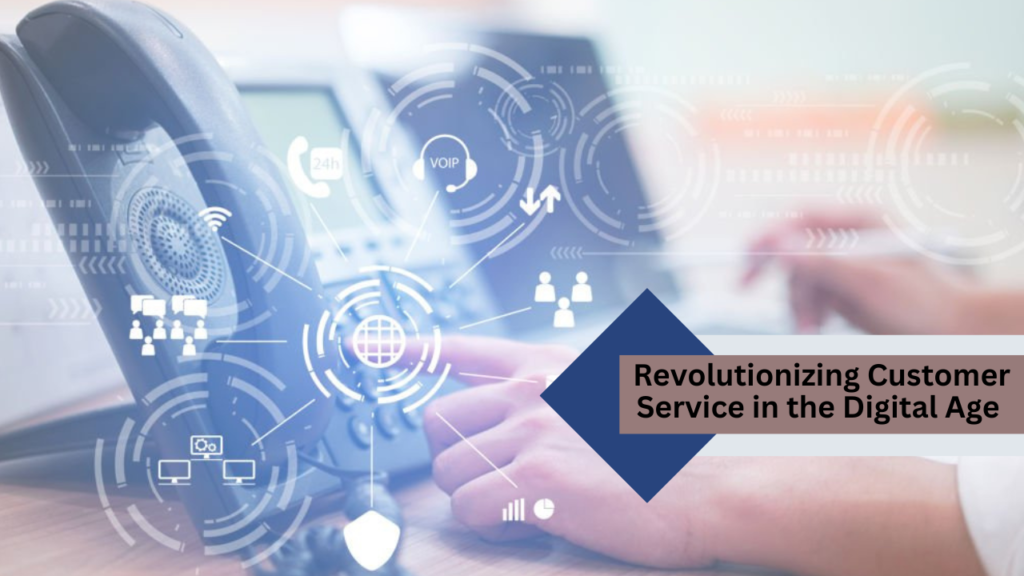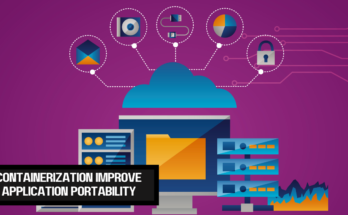Call Center Technology Revolutionizing Customer Service in the Digital Age |Key Features & Trends
In the dynamic realm of business, where prioritizing customer satisfaction is of utmost importance, call center technology stands as a cornerstone in shaping the landscape of the customer experience. From its modest origins to the avant-garde innovations of today, call center technology has undergone a remarkable evolution. Fundamentally, call center technology encompasses a diverse range of tools, software, and systems meticulously crafted to streamline and elevate communication between businesses and their customers. It extends beyond the simple act of answering calls; its essence lies in creating a seamlessly efficient customer service experience.

Evolution of Call Center Technology
Early Call Center Systems
In the initial stages of their existence, call centers heavily depended on rudimentary telephone systems and a manual approach to call distribution. Agents were tasked with the manual routing of calls to their available colleagues, a method susceptible to errors and delays. This manual process, while a foundational aspect of early call center operations, often led to inefficiencies, inaccuracies, and prolonged wait times for customers seeking assistance.
Transition to Digital Platforms
The onset of digital Call Center Technology marked a monumental shift in the landscape. This transformative wave ushered in the era of automated call routing systems and Interactive Voice Response (IVR), revolutionizing operational processes and significantly diminishing wait times for customers.
Integration of Artificial Intelligence
Artificial intelligence (AI), which uses cutting-edge skills like sentiment analysis and natural language processing, has become a dominant force in today’s world. AI is becoming more and more prevalent in the customer service industry, where chatbots and virtual assistants driven by AI are the main attraction and are essential to improving the customer experience as a whole. These intelligent entities go beyond mere automation, delivering instantaneous and personalized support that significantly elevates the overall customer service experience.
Key Features of Modern Call Center Technology
1. Automatic Call Distributor (ACD):
Call Center Technology customer service, an Automatic Call Distributor (ACD) emerges as a game-changer. This intelligent system adeptly routes calls to available agents based on skillset, workload, and other pertinent factors. By minimizing wait times, ACD ensures that customers receive swift and tailored assistance, enhancing overall satisfaction.
2. Interactive Voice Response (IVR):
Empowerment lies at the heart of customer service, and Interactive Voice Response (IVR) is a key facilitator. Call Center Technology introduces self-service options through voice menus, enabling customers to independently resolve simple issues without the need for agent interaction. IVR not only fosters efficiency but also puts control in the hands of the customers.
3. Computer Telephony Integration (CTI):
Efficiency meets integration in the form of Computer Telephony Integration (CTI). This technology seamlessly merges phone systems with Customer Relationship Management (CRM) and other software. By providing real-time customer information, CTI empowers agents to deliver personalized service. Additionally, it automates tasks such as call recording and data entry, streamlining operations.
4. Omnichannel Support:
In a world where communication spans various platforms, Omnichannel Support emerges as a necessity. This technology ensures seamless customer journeys across channels like voice, chat, email, and social media. The result is flexibility and convenience, as customers can effortlessly transition between channels while receiving consistent and personalized support.
5. Workforce Management (WFM) Tools:
Efficient resource allocation is a cornerstone of successful Call Center Technology management. Workforce Management (WFM) Tools automate agent scheduling, track performance, and optimize staffing levels. The result is a well-managed workforce that not only meets but exceeds customer expectations, leading to heightened satisfaction.
6. Call Recording and Analytics:
Continuous improvement is fueled by data, and Call Recording and Analytics play a pivotal role in this journey. By recording calls for quality assurance and training purposes, call centers can identify areas for improvement. Data analysis provides valuable insights, enabling personalized customer interactions and elevating the overall service quality.

7. Customer Relationship Management (CRM) Integration:
Personalization is a key driver of customer satisfaction, and CRM Integration provides the necessary tools. By offering agents a 360-degree view of customer data, including purchase history, interactions, and preferences, CRM integration enables personalized service. This fosters stronger customer-agent relationships and contributes to long-term loyalty.
8. Speech Recognition and Text-to-Speech (TTS):
9. Artificial Intelligence (AI):
The integration of Artificial Intelligence (AI) brings forth intelligent assistants in the form of chatbots and virtual agents. These AI-powered entities handle basic inquiries, automate repetitive tasks, and offer personalized support. By freeing up agents to focus on complex issues, AI optimizes operational efficiency and ensures a higher level of service quality.

10. Reporting and Dashboards:
In the dynamic landscape of customer service, informed decision-making is paramount. Reporting and Dashboards provide real-time insights into critical metrics such as call volume, customer wait times, and agent performance. Armed with this data, call centers can make data-driven decisions, continually improving their operations to meet evolving customer needs.
Benefits of Call Center Technology
1. Improved Customer Experience
Utilizing cutting-edge technologies allows businesses to deploy highly tailored and streamlined services, thereby significantly elevating levels of customer satisfaction and fostering lasting customer loyalty. By harnessing advanced tools and innovations, companies can go beyond generic offerings, customizing their services to meet individual customer needs with precision and efficiency. This strategic integration of technology not only enhances the overall customer experience but also cultivates a deeper sense of loyalty as customers appreciate and value the personalized attention and efficiency delivered by the business.
2. Increased Efficiency and Productivity
Automating routine tasks within the call center environment, coupled with the implementation of intelligent call routing systems, plays a pivotal role in redirecting agent attention towards handling intricate and more challenging issues. The implementation of strategic automation serves not only to streamline operational processes but also plays a pivotal role in elevating the overall efficiency of the call center. This, in turn, empowers agents to focus their expertise where it is most impactful – on intricate problem-solving and engaging in high-value customer interactions.
3. Enhanced Data-Driven Decision-Making
Analyzing customer data provides invaluable insights, enabling businesses to make informed decisions that significantly and positively influence their daily operations. By thoroughly examining the nuances of customer data, companies acquire a profound understanding of consumer behavior, preferences, and trends. This understanding empowers businesses to customize their strategies and approaches, seamlessly aligning with the ever-evolving needs of their target audience. This thorough analysis acts as a strategic guide, directing businesses toward operational enhancements that are not only effective but also efficient, fostering heightened customer satisfaction and ultimately contributing to the overall success and growth of the organization.
Trends in Call Center Technology
1. Cloud-Based Solutions
The transition towards cloud-based call center solutions represents a significant paradigm shift, presenting businesses with unparalleled scalability, flexibility, and cost-effectiveness. This transformative approach empowers companies to effortlessly tailor their operations to evolving requirements, ensuring a seamless adaptation to dynamic business landscapes. The cloud-based model not only enhances the ability to scale operations up or down as needed but also provides a cost-effective alternative, allowing businesses to allocate resources judiciously and optimize their overall operational expenditure.

2. Omnichannel Communication
Customers today demand a fluid and interconnected experience as they interact with businesses through different channels. The significance of omnichannel solutions lies in their ability to enable businesses to maintain a uniform standard of interaction with customers, irrespective of the platform or channel they opt for engagement. This involves establishing a seamless and integrated experience, guaranteeing that customers encounter consistent and top-notch service and information, whether they choose to interact through a website, mobile app, social media, or any other communication channel. In essence, omnichannel solutions empower businesses to seamlessly integrate and synchronize their customer touchpoints, contributing to a more robust and satisfying customer experience across the entire spectrum of interactions.
3. Chatbots:
Chatbots have become a topic of debate, experiencing both a surge in popularity and skepticism. While their appeal grows due to increasing consumer demands for self-service options, some individuals remain critical, pointing out significant limitations. A common criticism revolves around the perceived lack of intelligence in chatbots. Despite effectively handling straightforward queries, many argue that they fall short when confronted with inquiries beyond the scope of simple “yes/no” responses.
This often leads to the belief that engaging in a phone call with a human agent becomes inevitable for more complex issues. It’s crucial to recognize the diversity within the realm of chatbots. Some operate on pre-programmed responses to frequently asked questions (FAQs), triggering their interaction only when specific keywords are detected or when customers click on provided options. On the other hand, more advanced chatbots employ Natural Language Processing (NLP) to engage in conversations at a more human level. These sophisticated systems continuously expand their vocabulary and understanding of context through ongoing interactions.
Dialpad’s customer engagement platform introduces a unique feature in its self-service or chatbot functionality. Unlike traditional chatbots that rely on FAQs, Dialpad’s chatbot can search through unstructured data sources, including PDF documents and past customer calls. This capability enables it to unearth answers to more complex questions, setting it apart from conventional approaches.
TL; DR – Striking the Right Balance: Leveraging Self-Service alongside Live Communication Options.
4. AI-Driven Personalization
Artificial Intelligence (AI) has become an integral component in the realm of customer interactions, experiencing a growing utilization to intricately personalize engagement. This involves the provision of highly customized solutions and recommendations that are meticulously tailored to individual preferences and unique user behaviors. The evolving landscape of AI integration allows businesses to not only understand but also anticipate the specific needs and desires of each customer, creating a more personalized and enriching experience for every individual involved.
Conclusion:
In today’s interconnected world, prioritizing customer satisfaction is paramount. Call centers, once synonymous with basic phone lines and queues, are transforming into sophisticated hubs of customer interaction, driven by a diverse range of technologies. From intelligent call routing to AI-powered self-service, these tools play a crucial role in connecting businesses with their customers. Embracing call center technology offers businesses significant rewards.
Call Center Technology Enhanced customer experiences, heightened agent productivity, and data-driven decision-making result in not only satisfied customers but also reduced costs and a competitive edge. However, this journey is ongoing. The landscape continually evolves, with AI, automation, and emerging technologies like augmented reality continually presenting opportunities to personalize, streamline, and enhance the customer journey
Call Center Technology FAQs:
Q1. What are the essential call center technologies?
a. Telephony Systems: VoIP or cloud-based solutions for seamless call routing and management.
b. ACD (Automatic Call Distributor): Directs calls to the appropriate agent based on skillset and availability.
c. IVR (Interactive Voice Response): Presents self-service options for swift resolutions.
d. CRM Integration: Equips agents with a comprehensive customer profile for personalized interactions.
e. Call Recording and Analytics: Evaluates call performance and agent strengths for data-driven enhancements.
Q2. How can technology improve the customer experience (CX)?
a. Omnichannel Support: Effortlessly manages inquiries across voice, chat, email, and social media.
b. AI-Powered Chatbots: Provide 24/7 support and handle simple tasks, enabling agents to focus on complex issues.
c. Personalized Interactions: Utilizes customer data for tailored support and proactive outreach.
d. Faster Resolutions: Automated workflows and self-service options reduce wait times and enhance efficiency.
Q3. What are the benefits of using call center technology?
a. Increased Agent Productivity: Automation liberates agents for more valuable interactions.
b. Improved Efficiency: Streamlined workflows and data analysis optimize operational processes.
c. Reduced Costs: Automation and self-service options cut staffing and operational expenses.
d. Better Decision Making: Data-driven insights guide strategic choices and resource allocation.
e. Enhanced CX: Resulting in happier customers and improved brand loyalty.
Q4. How can call centers prepare for the future?
a. Embracing AI and Automation: Implementing chatbots, voice assistants, and advanced analytics for personalized service.
b. Integrating Emerging Technologies: Exploring voice search, augmented reality, and other innovations for immersive CX.
c. Investing in Agent Training: Equipping agents to handle complex interactions and leverage new technologies effectively.
d. Focus on Data-Driven Decisions: Continuously analyzing data to make informed improvements and adapt to changing trends.
Q5. Where can I learn more about call center technology?
a. Industry Webinars and Conferences: Networking opportunities with insights into the latest trends.
b. Research Reports and Analyst Insights: In-depth understanding of market dynamics and emerging technologies.
c. Vendor Demos and Consultations: Practical knowledge sharing through hands-on experience.
d. Online Forums and Communities: Collaborative learning platforms for sharing experiences and staying updated.
e. Technology Blogs and Resources: Regularly updated sources for the latest information, case studies, and expert opinions on call center technology.

